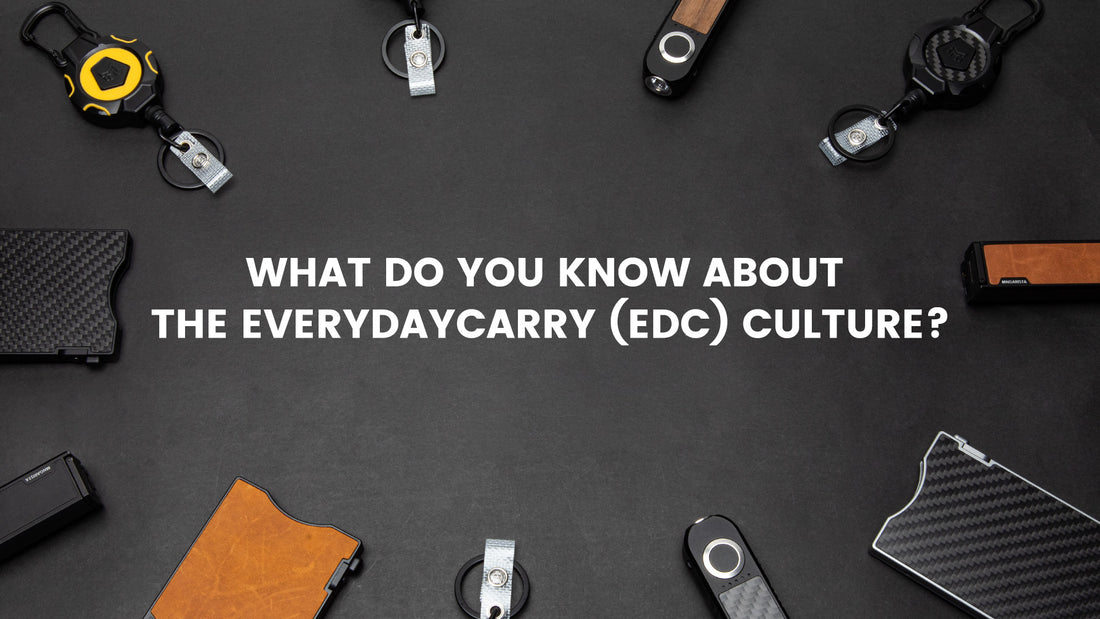Introduction
EveryDayCarry, commonly abbreviated as EDC, refers to the collection of items that individuals carry with them daily to ensure they are prepared for various situations. This culture has evolved significantly, encompassing a broad spectrum of participants from different walks of life, including survivalists, urban dwellers, tech enthusiasts, and fashion aficionados. This analysis explores the origins, components, motivations, and societal impacts of the EDC culture, shedding light on why it has garnered such a devoted following.
Origins of EDC
The EDC culture finds its roots in practicality and preparedness. Historically, people have always carried essential tools and items, from knives and fire starters to more modern gadgets like smartphones and multi-tools. The concept of EDC became more formalized with the advent of online communities and forums in the early 2000s, where enthusiasts began sharing their gear and experiences. Websites like Everyday Carry and social media platforms like Instagram and Reddit have played pivotal roles in popularizing and shaping the culture.
Components of EDC
The specific items that constitute an individual's EDC can vary widely, but several categories of gear are commonly featured:
- Tools and Multi-tools: These are often compact, multifunctional devices like the Leatherman or Swiss Army Knife. They provide a range of functionalities, from cutting and screwing to opening bottles and cans.
- Knives: Folding knives or fixed-blade knives are staples in many EDC setups, valued for their utility in everyday tasks and emergency situations.
- Flashlights: Portable lighting solutions, often in the form of LED flashlights, are crucial for visibility and safety in low-light conditions.
- Wallets and Money Clips: These are designed for carrying cash, credit cards, and identification securely and efficiently.
- Smartphones and Tech Gadgets: In the digital age, smartphones, portable chargers, and earbuds are indispensable parts of many people's daily carry.
- Writing Instruments: Pens, often robust and stylish, are valued for jotting down notes, signing documents, or even self-defense.
- Personal Defense Items: This category includes items like pepper spray, tactical pens, or even concealed carry firearms, depending on local laws and personal preferences.
- Wearables: Watches, particularly smartwatches or rugged timepieces, are common, providing not just timekeeping but also additional functionalities like fitness tracking and notifications.
- Key Organizers: These help manage and carry keys in an organized and silent manner, preventing the clutter and noise of loose keys.
Motivations Behind EDC
The reasons people engage in the EDC culture are diverse and multifaceted:
- Preparedness: A core principle of EDC is being ready for unexpected situations. This includes everyday inconveniences like needing to cut a loose thread or more serious emergencies like power outages.
- Practicality: Many EDC enthusiasts prioritize functionality and efficiency, selecting items that offer the most utility with the least bulk.
- Self-Reliance: Carrying essential tools fosters a sense of independence and self-sufficiency, empowering individuals to handle a variety of situations on their own.
- Aesthetic and Identity: For many, EDC items are a form of self-expression. High-quality, well-designed gear reflects personal style and values. The act of curating and sharing one's EDC kit can also be a way of connecting with like-minded individuals.
- Minimalism and Organization: EDC promotes a mindset of carrying only what is necessary, which aligns with minimalist lifestyles. This approach encourages thoughtful selection and organization of personal belongings.
The Role of Social Media and Online Communities
Social media platforms and online forums have significantly influenced the EDC culture. Websites like Everyday Carry showcase user-submitted photos and lists of daily carry items, providing inspiration and recommendations. Instagram hashtags like #everydaycarry and #edcgear feature thousands of posts, creating a visual repository of EDC setups. These platforms foster a sense of community, where enthusiasts can share tips, reviews, and modifications.
Societal Impacts of EDC
The EDC culture has several broader societal implications:
- Consumer Behavior: The EDC movement has driven demand for high-quality, durable goods. Companies specializing in EDC gear have seen growth, and mainstream brands have adapted by incorporating EDC principles into their product designs.
- Safety and Security: By promoting the carry of items like flashlights and personal defense tools, EDC culture can enhance individual safety. However, it also raises questions about the responsible use and legal considerations of such items.
- Environmental Impact: The focus on durability and reusability in EDC gear can contribute to reduced waste and a more sustainable consumption pattern. On the flip side, the production and disposal of tech gadgets and batteries present environmental challenges.
- Psychological Benefits: Carrying EDC items can provide a sense of control and confidence. Knowing one is prepared for various scenarios can reduce anxiety and increase a sense of security.
- Innovation and Design: The EDC community's demand for multifunctional, compact, and stylish items has spurred innovation in product design. This has led to advancements in materials, ergonomics, and multifunctionality.
Challenges and Criticisms
While the EDC culture has many positive aspects, it also faces several challenges and criticisms:
- Over-commercialization: Some argue that the culture has become too focused on consumerism, with an emphasis on acquiring the latest gear rather than the underlying principles of preparedness and practicality.
- Accessibility: High-quality EDC items can be expensive, potentially excluding individuals with limited financial resources from fully participating in the culture.
- Legal Issues: The carry of certain items, particularly knives and personal defense tools, can be subject to legal restrictions, varying widely by jurisdiction. This can complicate adherence to EDC principles.
- Balance: There is a risk of carrying too much gear, leading to an overburdened and impractical daily setup. Striking a balance between preparedness and minimalism is a common challenge within the community.
Conclusion
The EveryDayCarry culture is a multifaceted and dynamic phenomenon that reflects a deep-seated human desire for preparedness, practicality, and self-reliance. It is shaped by a diverse community of enthusiasts who value high-quality, functional, and aesthetically pleasing gear. While it offers numerous benefits, including enhanced safety, psychological comfort, and innovation in product design, it also faces challenges related to consumerism, accessibility, and legal considerations. As the EDC culture continues to evolve, it will likely adapt to new societal trends and technological advancements, maintaining its relevance and appeal in a rapidly changing world.



